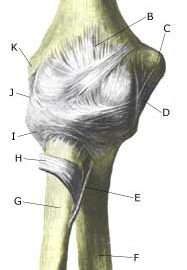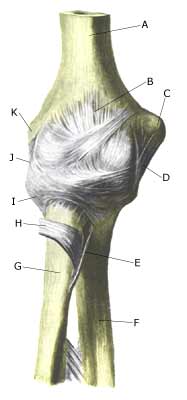|
||
|
||
| Cause: A dislocation of the elbow can occur following a direct fall on an outstretched arm. The dislocation can in some cases be complicated by a bone fracture, vascular damage or nerve damage.
Symptoms: Sudden insetting pain around the elbow, with pain-conditional restriction of mobility of the arm following a sudden, violent load (fall). Examination: Sudden, strong pain in the arm with restriction of movement following a fall should always lead to acute medical examination. Acute medical assistance should be sought due to the risk of damage to blood vessels and nerves. An X-ray examination will usually reveal the dislocation and rule out bone fracture. Treatment: The dislocation can usually, in uncomplicated cases, be put in place without the need of surgery. Some recommend a short time where bandaging is used after the dislocation has been put into place. Surgery is often necessary in cases where complications arise from the dislocation in the form of bone fracture, vascular damage or nerve damage. Rehabilitation with exercises involving movement should be commenced as soon as possible, (article-1), (article-2). Rehabilitation can commence shortly after the dislocation is put into place (and possible bandaging has been removed) in uncomplicated cases without bone fracture, vascular damage or nerve damage. Recommendations from your doctor must be taken into consideration in the rehabilitation program if the dislocation has involved complications and has possibly required surgery. Complications: Tears or ruptures around the elbow will in the vast majority of cases heal without complication. Some cases will experience persistent stiffness in the elbow, looseness of the elbow, calcification in the muscles surrounding the elbow and vascular or nerve damege. Dislocation of the elbow can in some cases be complicated by ligament injuries in the wrist, (article). |


